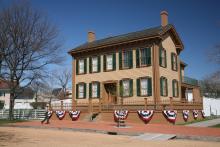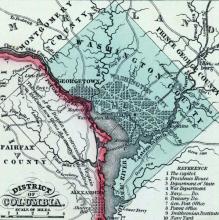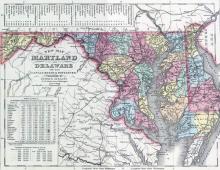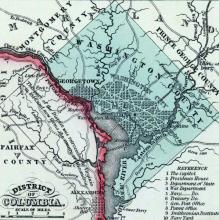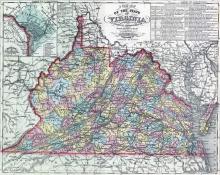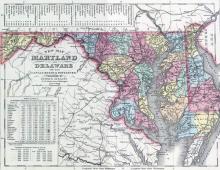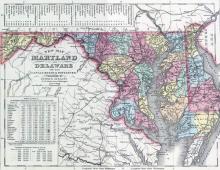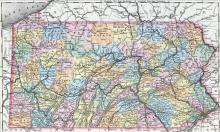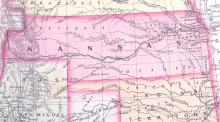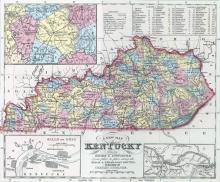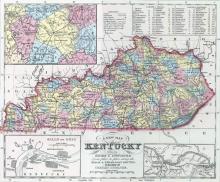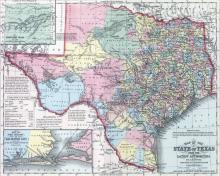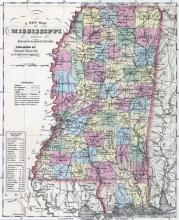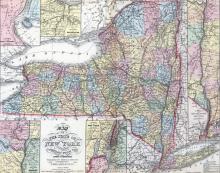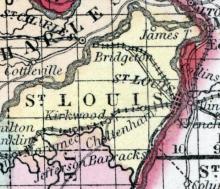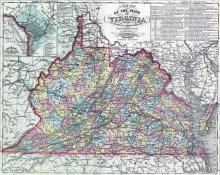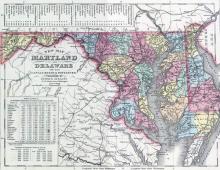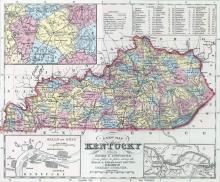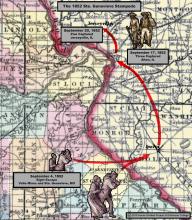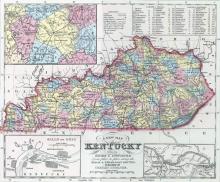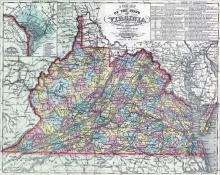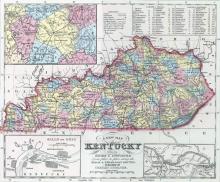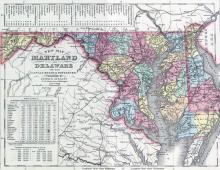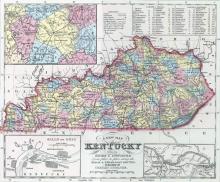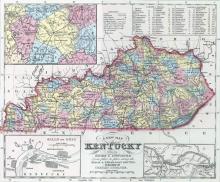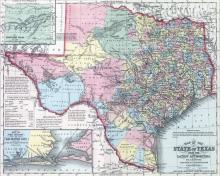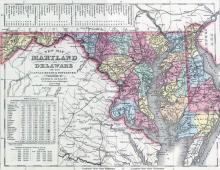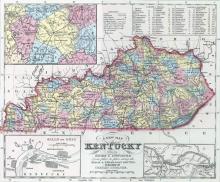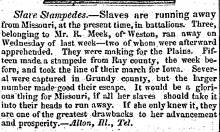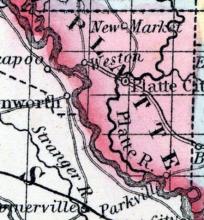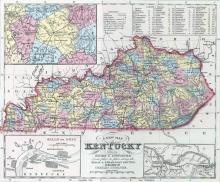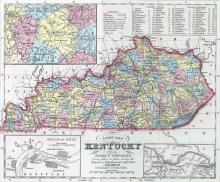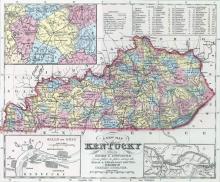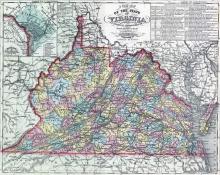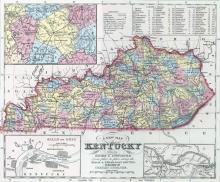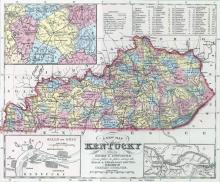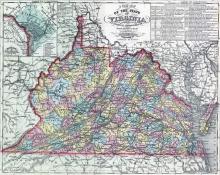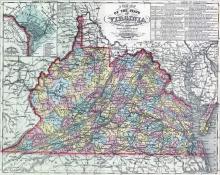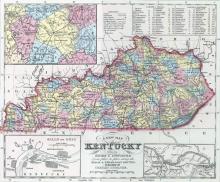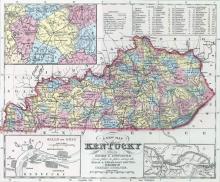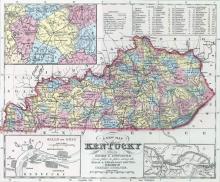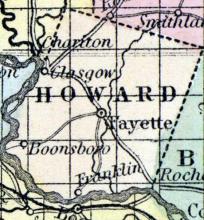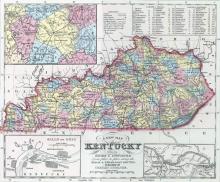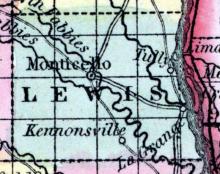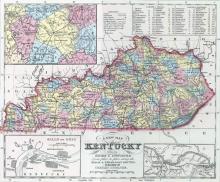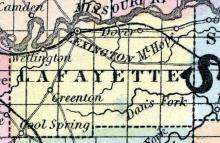Up to 14 freedom seekers escaped from St. Louis and passed through Springfield, Illinois in January 1850, where they received help from Jameson Jenkins, a free black neighbor of Abraham Lincoln's.
View All Stampedes, 1847-1865 // 1840s // 1850s // 1860s
Displaying 1 - 50 of 138
In late May 1850, a correspondent described a "stampede" of about 20 enslaved people from Washington, D.C. One group of three people escaped from the home of South Carolina congressman William Colcock on Tuesday night, May 28.
Sometime in June 1850, a group of 16 enslaved people fled from Baltimore county, Maryland, journeying to Shrewsbury, Pennsylvania. But slaveholders offered a hefty $2,000 reward for the freedom seekers' recapture, and they were discovered hiding in the outhouse of a farm near Shrewsbury. The freedom seekers were re-enslaved and taken back to Maryland.
On Saturday night, July 27, 1850, a group of freedom seekers escaped from Washington, D.C. with the aid of abolitionist William Chaplin. Among them were several enslaved people claimed by Georgia congressmen Robert Toombs and Alexander H. Stephens. However, Washington police had gotten wind of the plot, and ambushed the wagon in which the freedom seekers and Chaplin were traveling, ending their quest for freedom.
Sometime in late July 1850, a group of eight freedom seekers were seen crossing the mountains west of Clearspring, Maryland. Reports suggested that they were claimed by slaveholders from "southern Virginia."
Sometime in early August 1850, seven freedom seekers escaped in concert from Baltimore, Calvert, Montgomery, and Prince George's counties. On Wednesday, August 7, a group of Pennsylvanians observed the freedom seekers at the home of a free black man near Shrewsbury, who was not identified by name, and attempted to trick the runaways with promises of help.
On Sunday night, August 18, 1850, a sizable group ranging in number from 30 to 40 freedom seekers escaped from Prince George's county, Maryland. Their ultimate fate remains unknown.
Soon after the passage of the 1850 Fugitive Slave Act, reports described the flight of fugitive slaves from Pittsburgh, Pennsylvania. Most contemporaries believed that these individuals had long since escaped from bondage in the Upper South, and now took flight to avoid re-enslavement under the new federal code.
Sometime in late 1850, accounts described the mass escape of between 150 to 200 enslaved people held by Seminole and Creek Nations. The escapees were reportedly headed south towards Mexico.
Throughout late April 1851, a number of "stampedes" were launched from Mason and Nicholas counties, Kentucky. On Sunday night, April 27 alone, more than 14 freedom seekers escaped from around Maysville, while "several" others left Nicholas county during the same week.
Around May 1, 1851, a "stampede" of roughly 20 freedom seekers took place from Lewis county, Kentucky. Among the group was an enslaved mother and her seven children, ranging in age from 25 to 12. However, after crossing the Ohio river the group was recaptured, with a sizable $4,000 reward doled out to the captors. Following their recapture, the mother and her seven children were sold by a Lewis county slaveholder named Fagan for $4,200.
Sometime in May or June 1851, a group of "several" enslaved people near LaGrange, Texas made a plan to escape to Mexico. However, one of the prospective escapees set out early, was recaptured, and confessed the whole plot, thwarting the escape.
Three freedom seekers, and a man named B. Thompson who had been sentenced to 10 years in the state penitentiary for "negro stealing," escaped from the Lauderdale county jail in what contemporaries called a "stampede." Along with them was a man named Thomas Boyd, imprisoned for assault and battery.
Reports that a U.S. deputy marshal was in Rochester with warrants under the 1850 Fugitive Slave Act prompted the flight of at least three individuals fearing recapture. According to contemporary accounts, it was believed that these three individuals--and possibly more--had previously escaped from slavery and taken refuge in New York.
On Tuesday, July 13, 1852, four enslaved people escaped from St. Louis: 23-year-old George (or William Johnson), who had a free wife in St. Louis, 36-year-old John, 20-year-old Henry, and 16-year-old Isaac. Their enslaver, John Mattingly, advertised a $400 reward for their recapture.
On Wednesday night, July 28, 1852, six enslaved people, who were not identified by name, escaped from Pendleton county, Virginia. Three were held by a local attorney and slaveholder named Z. Dyer, two by another attorney, Cyrus Hopkins, and another claimed by Elijah Stonestreet. Their ultimate fate remains unknown.
On Saturday night, August 7, 1852, some 14 enslaved people, both men and women, escaped from Washington county, Maryland. All were claimed by a slaveholder identified as Mrs. Pendleton of Hagerstown, Maryland, who had hired out (or rented) the enslaved people to work throughout surrounding Washington county. Pendleton offered a sizable $1,400 reward for their recapture. Days later, the freedom seekers were captured at Harrisburg.
On Tuesday night, August 24, 1852, seven heavily-manacled men escaped from the infamous Arterburn slave pen in Louisville, Kentucky. The Louisville Courier described it as a "stampede," and suspected the seven freedom seekers were "lying out" in cornfields near the city, a common resistance tactic adopted by enslaved southerners. Their ultimate fate is unknown.
On Saturday night, September 4, 1852, eight enslaved workers from the Valle mines coordinated a stampede through Ste. Genevieve. Three of the enslaved men --Isaac, Joseph and Bill-- escaped from Valle Lead Mines in Jefferson county, some 30 miles west. Their escape was coordinated with five other freedom seekers from the town of Ste. Genevieve where the Valle family lived. These young men (all named in a runaway advertisement) included Bernard, Edmund, Henry, Joseph and Theodore.
On Tuesday night, September 7, 1852, eight enslaved people--five men, a woman, and two children--escaped from Mason county, Kentucky apparently "in concert," in what the Maysville Eagle termed a "stampede." Although the fate of the eight freedom seekers is unknown, the group escape prompted calls for slaveholders to ramp up their patrols.
On Saturday night, September 25, 1852, seven enslaved people, who were not identified by name, escaped from Wood county, Virginia for "parts unknown." Six of the freedom seekers were claimed by slaveholding lawyer William Spencer, while the seventh escapee was held by the estate of the deceased enslaver George W. Kincheloe.
On Sunday night, September 26, 1852, a group of 31 freedom seekers escaped from Augusta and Dover, Kentucky. Slaveholders pursued the freedom seekers to Ripley, Ohio, where they found some of the escapees' belongings and managed to recapture three. But African American residents of Ripley threatened to resist the slaveholders' efforts with violence if necessary, and local authorities refused to cooperate with the white Kentuckians.
On Saturday, October 16, 1852, a group of 16 enslaved people escaped from near Hagerstown, Maryland. Fifteen of the freedom seekers were claimed by slaveholding lawyer Elias Cheney, and another person held by lawyer Alexander Mitchell. A $1000 reward was offered for their recapture. Their ultimate fate remains unknown.
On Wednesday, October 20, 1852, a group of 10 freedom seekers--six men and four women--escaped from "an interior county of Kentucky" and crossed the Ohio river below Louisville. According to one account, two of the men had heard rumors that they were to be sold to Louisiana, and set off with their wives in order to keep their families intact. Reports indicated that they eluded re-enslavement and successfully gained their freedom.
On Sunday, October 31, 1852, approximately 25 enslaved people escaped from Bourbon county, Kentucky on horseback. Some of the freedom seekers were recaptured near Blue Licks, Kentucky, while others were believed to have crossed the Ohio river. Several Kentucky slave catchers visited Cincinnati days later, but apparently without success. The fate of the remainder of the freedom seekers is unknown.
Two enslaved men and a woman escaped from Boone County, Kentucky in November 1852. With assistance from white abolitionist Levi Coffin in Cincinnati, the three freedom seekers boarded a train. Aboard the train, their slaveholder's nephew, Donn Piatt, recognized the three freedom seekers and persuaded them to disembark with him at West Liberty, Ohio. Piatt promised to steady work and vowed to purchase their freedom. Free Blacks nearby, however, rightly doubted Piatt's motives.
Reports circulated in early 1853 that twenty enslaved people and an overseer had left the plantation of slaveholder Berry Hodge in a "stampede." The group reportedly reached Mexico and freedom.
On Saturday night, January 15, 1853, nine freedom seekers escaped from Cumberland, Maryland in a "stampede." Eight of the escapees were claimed by J.G. Lynn, a slaveholding attorney, and the ninth person by another attorney, Joseph Dilley. The nine freedom seekers charted a course some 25 miles into Bedford county, Pennsylvania, where they were overtaken by slave catchers. The eight freedom seekers claimed by Lynn were all recaptured.
On Saturday night, April 2, 1853, 25 enslaved people escaped from Boone county, Kentucky. Reports suggest they may have travelled north, through Cincinnati to Preble county, Ohio, where Underground Railroad activists reported that "twenty-four Fugitives passed through." This account may have been referencing the same group of freedom seekers.
In mid-May 1853, a group of 15 enslaved people escaped in a "stampede" from Ray county, Missouri, bound for Iowa. "Several" were recaptured in Grundy county, but "the larger number" successfully escaped.
Three enslaved people escaped from slaveholder R. Meek in Weston, Missouri. A report noted that the freedom seekers were "making for the Plains." However, two were later recaptured. Contemporary reports described the escape of these three bond people as part of a wave of recent "slave stampedes" unsettling the institution throughout western Missouri.
On Saturday night, August 13, 1853, 11 freedom seekers, who were not identified by name, escaped from a series of plantations "sixty miles back" of the Ohio river. Five managed to cross the river near Cincinnati, eluding slave catchers. The remaining six people were apparently recaptured.
On Sunday night, August 14, 1853, four enslaved people escaped from the Henderson, Kentucky residence of slaveholder Jackson McClain. Weeks earlier, an enslaved woman had attempted to set fire to McClain's house, and now the other enslaved people he claimed were openly resisting through what local papers called a "stampede." Then on Monday night, August 15, reports circulated that "five or six more" enslaved people had escaped from McClain.
On Wednesday night, September 14, 1853, five enslaved people--including three young women--escaped from near Maysville, Kentucky. They crossed the Ohio river near Ripley, Ohio, and managed to elude slave catchers.
Sometime in October 1853, eight enslaved people escaped from Mason county, Virginia. They were claimed by slaveholders named Beale, Bateman, Capehart, and Mrs. Lewis. The freedom seekers' ultimate fate remains unknown.
On October 29, 1853, around 11 enslaved people escaped in what was described as a "stampede" from Palmyra, Missouri. Later in February 1854, a local paper reported that over $15,000 in human "property" had been lost as a result of the enslaved Missourians' mass flight from bondage.
On Monday night, December 12, 1853, nine enslaved people escaped from Covington, Kentucky. Five of the freedom seekers were claimed by Covington mayor Bushrod W. Foley. They apparently traveled near Cincinnati, passing through Cumminsville, Ohio on their way north, reportedly continuing on to Canada.
Sometime in early 1854, an enslaved family in Henry county, Kentucky attempted to escape.
Sometime in late March or early April 1854, two enslaved men escaped from Virginia. Although their names were not recorded, nor any details about the precise location of their escape, they reached St. Albans, Vermont in early April. The two freedom seekers were "hotly pursued," but according to abolitionist John W. Lewis, the pair eluded slave catchers and proceeded safely to Canada.
Sometime in April 1854, a "stampede" of enslaved people occurred from Richmond, Virginia. The freedom seekers apparently escaped by water, prompting the Richmond Dispatch to propose a fleet of slave patrol ships, composed of "one or more fast-sailing vessels," to monitor for freedom seekers.
On Saturday night, May 28, 1854, around 20 enslaved people escaped from near Falmouth, Kentucky. Ten were claimed by slaveholder A. Robins, another six held by enslaver Charles A. Aulick, and "several others" by other slaveholding Kentuckians. The freedom seekers were "immediately pursued," though their ultimate fate remains unknown.
On Saturday night, June 10, 1854, three freedom seekers escaped from near Richmond in Madison county, Kentucky for "parts unknown." One was claimed by slaveholder Colonel D. Irvine, and two by enslaver Samuel Stone. Their ultimate fate remains unknown.
On Sunday, June 11, 1854, a group of 40 enslaved railroad workers escaped while constructing the Clarksville and Ridgeway Railroad, near Lynnesville, North Carolina. Their ultimate fate remains unknown.
Around Sunday, June 11, 1854, a group of nine freedom seekers escaped from Boone county, Kentucky to Ohio. Once on Ohio soil, however, they were recaptured, brought before U.S. Commissioner John Pendery in Cincinnati, and remanded to slavery.
On Tuesday night, June 13, 1854, 23 freedom seekers escaped from "Grant and adjoining counties." Journeying to the Licking River, the freedom seekers "lashed together" a series of canoes, and rowed to the Ohio River, charting a "circuitous route" to northern Cincinnati. Reports suggested that the next day, they were "off on the route to Canada by the underground railroad."
Sometime in late June or early July 1854, a group of seven freedom seekers escaped from Maysville, Kentucky. Their fate remains unknown.
On Sunday, September 3, 1854, nine freedom seekers escaped from Boone county, Kentucky. Reports suggested that they were taking refuge in Cincinnati, but their ultimate fate remains unknown.
In late September 1854, the Lafayette, MO Express reported a "stampede" of enslaved African Americans from the town of Dover, Missouri. Suspicion immediately fell upon several Jewish men, who had allegedly "tampered with" local enslaved people. A meeting of local slaveholders ordered the Jewish men to leave town. Then around early October, a group of the freedom seekers, enslaved by S.W.

